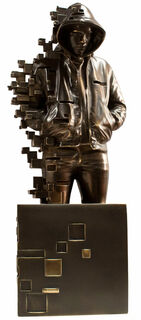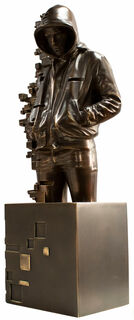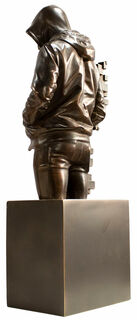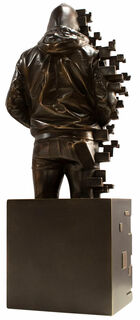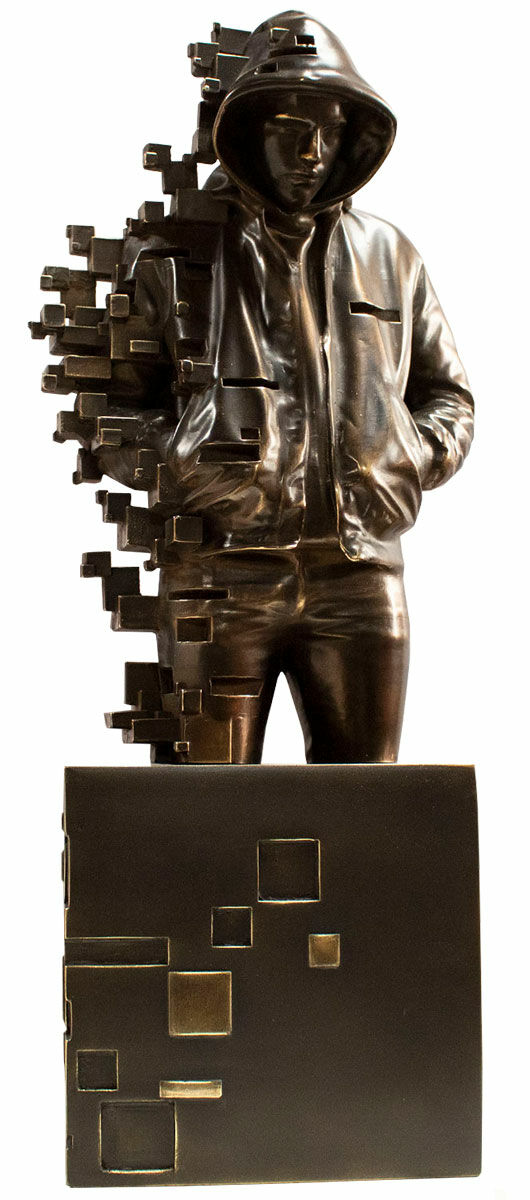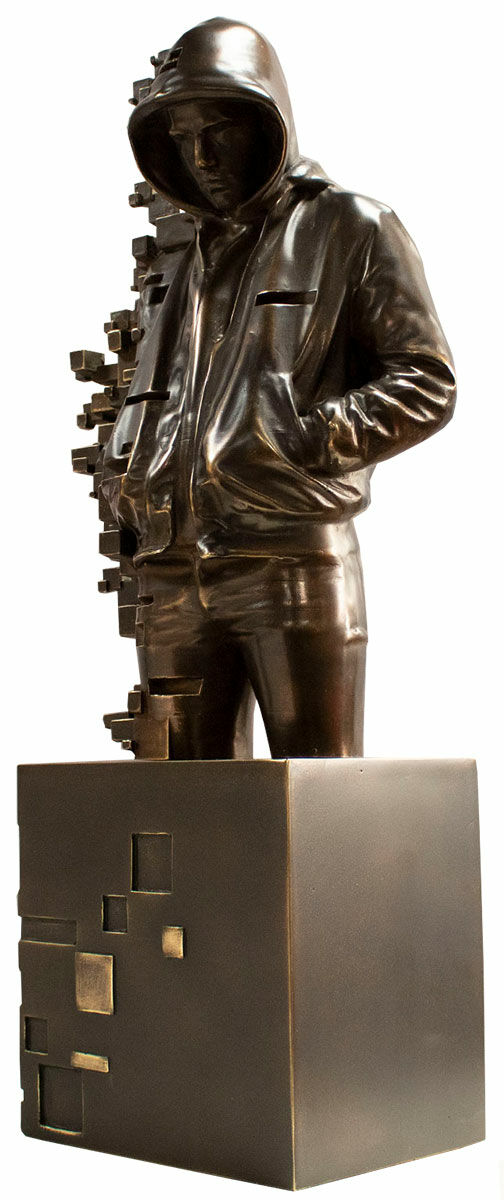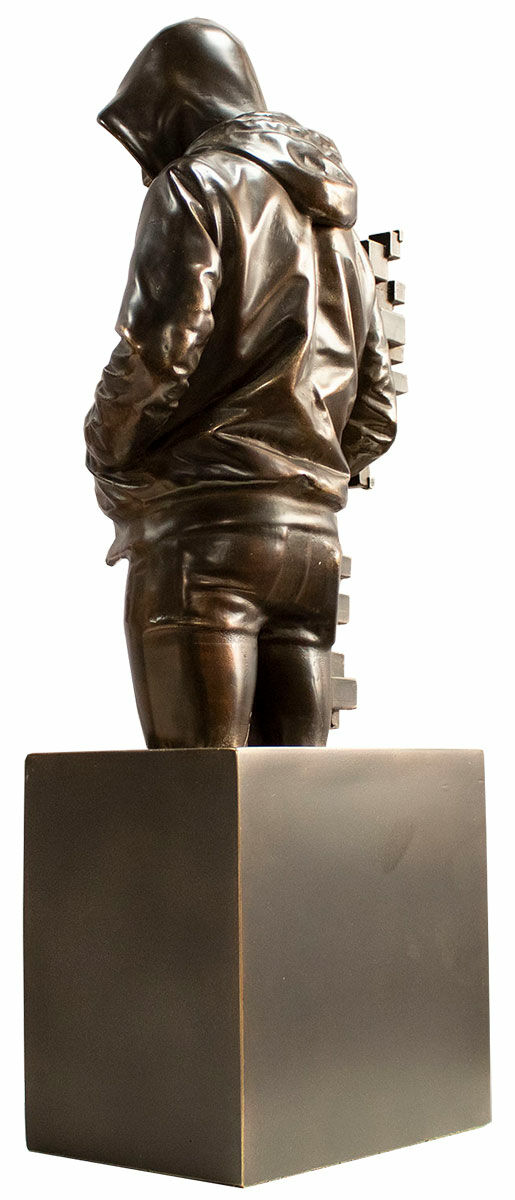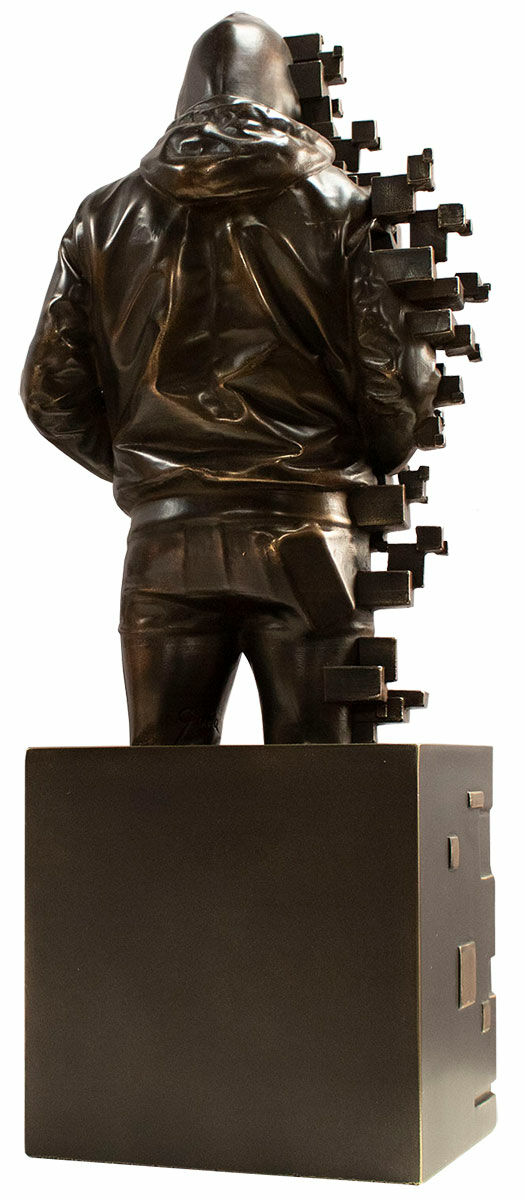Sculpture "Young Pixelated", bronze
Sculpture "Young Pixelated", bronze
Quick info
limited, 199 copies | numbered | signed | certificate | bronze | size 45 x 19 x 11 cm (h/w/d) | weight approx. 7.2 kg
Detailed description
Sculpture "Young Pixelated", bronze
Playing with perception: This sculpture by Spanish artist Miguel Guía seems to be caught between two worlds, reality and digitalisation. Just a moment ago, the young man dissolves into pixels and raises the question of what is real and what is fake.
Bronze sculpture. Limited edition of 199 copies, numbered and signed. Includes numbered certificate. Overall size 45 x 19 x 11 cm (h/w/d). Pedestal 15 x 15 x 11 cm (h/w/d). Total weight approx. 7.2 kg.
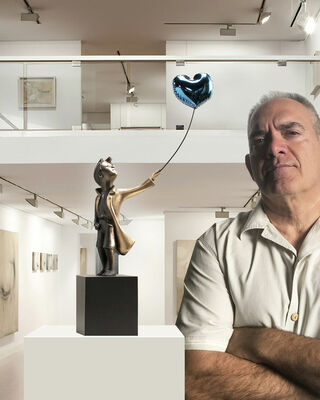
About Miguel Guía
Miguel Guía was born on 29 October 1960 in Madrid. He grew up surrounded by art in his family’s foundry and sculpture workshop, where he had contact with artistic design from a very early age. Surrounded by various artists, he developed extensive sculpting skills.
His initial style was mainly inspired by Cubism, drawing inspiration from Picasso and Manolo Valdés. He continued the cubist style for years and also embarked on a journey into Realism. Over the years, he has developed his unique style, which he calls "Art Essence," which he understands as "breaking the mould to find the essence of the sculpture."
An alloy of copper with other metals (especially with tin) used since ancient times.
When casting bronze, the artist usually applies the lost-wax technique which is dating back more than 5000 years. It's the best, but also the most complex method of producing sculptures.
First, the artist forms a model of his sculpture. It is embedded in a liquid silicone rubber mass. Once the material has solidified, the model is cut out. The liquid wax is poured into the negative mould. After cooling down, the wax cast is removed from the mould, provided with sprues and dipped into ceramic mass. The ceramic mass is hardened in a kiln, whereby the wax flows out (lost mould).
Now we finally have the negative form, into which the 1400° C hot molten bronze is poured. After the bronze had cooled down, the ceramic shell is broken off and the sculpture is revealed.
Now the sprues are removed, the surfaces are polished, patinated and numbered by the artist himself or, to his specifications, by a specialist. Thus, each casting becomes an original work.
For lower-quality bronze castings, the sand casting method is often used which, however, does not achieve the results of a more complex lost-wax technique in terms of surface characteristics and quality.
Term for an art object (sculpture, installation), which is produced in multiple copies in a limited and numbered edition according to the artist‘s will.
Artist's multiples have been called the most accessible and affordable art on the market.
A plastic work of sculptural art made of wood, stone, ivory, bronze or other metals.
While sculptures from wood, ivory or stone are made directly from the block of material, in bronze casting a working model is prepared at first. Usually, it is made of clay or other easily mouldable materials.
The prime time of sculpture after the Greek and Roman antiquity was the Renaissance. Impressionism gave a new impulse to the sculptural arts. Contemporary artists such as Jorg Immendorf, Andora, and Markus Lupertz also enriched sculptures with outstanding works.

